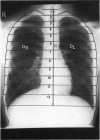Abstract
Thoracic ratios (TRs) were measured segmentally (T1-12) in the chest radiographs of 412 children aged 0-17 years attending hospital with minimal disorder or diseases (boys 193, girls 219). A new method for measuring TRs was used which calculates the width of the left hemithorax, the right hemithorax and the total thorax relative to T1-T12 distance. The data were analysed in 3 age groups--infancy, childhood and puberty, after the classification of Karlberg (1989). The findings are as follows. 1. The chest broadens from T1 to about T10-11. 2. Between infancy and childhood, relative to its length the chest narrows from above downwards and particularly in the lower chest (T5-12 average diminution, boys 9.5%, girls 9.8%). In the upper chest, the narrowing is more marked in girls than boys (T1-4 average diminution, boys 5.1%, girls 8.2%). 3. Between childhood and puberty, the girl's but not the boy's chest narrows further in its lower half (below T6 average diminution 3.3%). At T6 and above there is no detectable change in the relative width of the chest in either boys or girls. 4. The relative narrowing of the chest during growth appears to result from several mechanisms: (1) elevation of upper rib-vertebra angles (above 90 degrees); (2) drooping of lower rib-vertebra angles (below 90 degrees); and (3) linear rib growth being impaired relative to thoracic spinal growth in the lower ribcage (T6-12) of girls between childhood and puberty (Grivas et al. 1991 d). 5. The hypothesis is suggested that the relative narrowing of the lower chest with increasing age reduces the rotational inertia of the thorax in gait. There is a greater need for such reduction in girls because of the greater rotational inertia generated by the mass of their larger pelves. This hypothesis provides a mechanical explanation for the proportionate change in the girl's lung in the later stages of growth (Simon et al. 1972). 6. Developmentally, the left hemithorax is ahead of the right hemithorax in childhood. 7. Thoracic asymmetry favouring the right chest is found, and more so in puberty than childhood which is connected with the larger size of the thorax and lung in the adult. 8. The evidence suggests that hemithoracic development is caudocranial; this is consistent with an adaptation of the human ribcage to control spinal rotation and counterrotation when bipedal gait was acquired in evolution. 9. In progressive infantile idiopathic scoliosis, the upper chest is funnel-shaped.(ABSTRACT TRUNCATED AT 400 WORDS)
Full text
PDF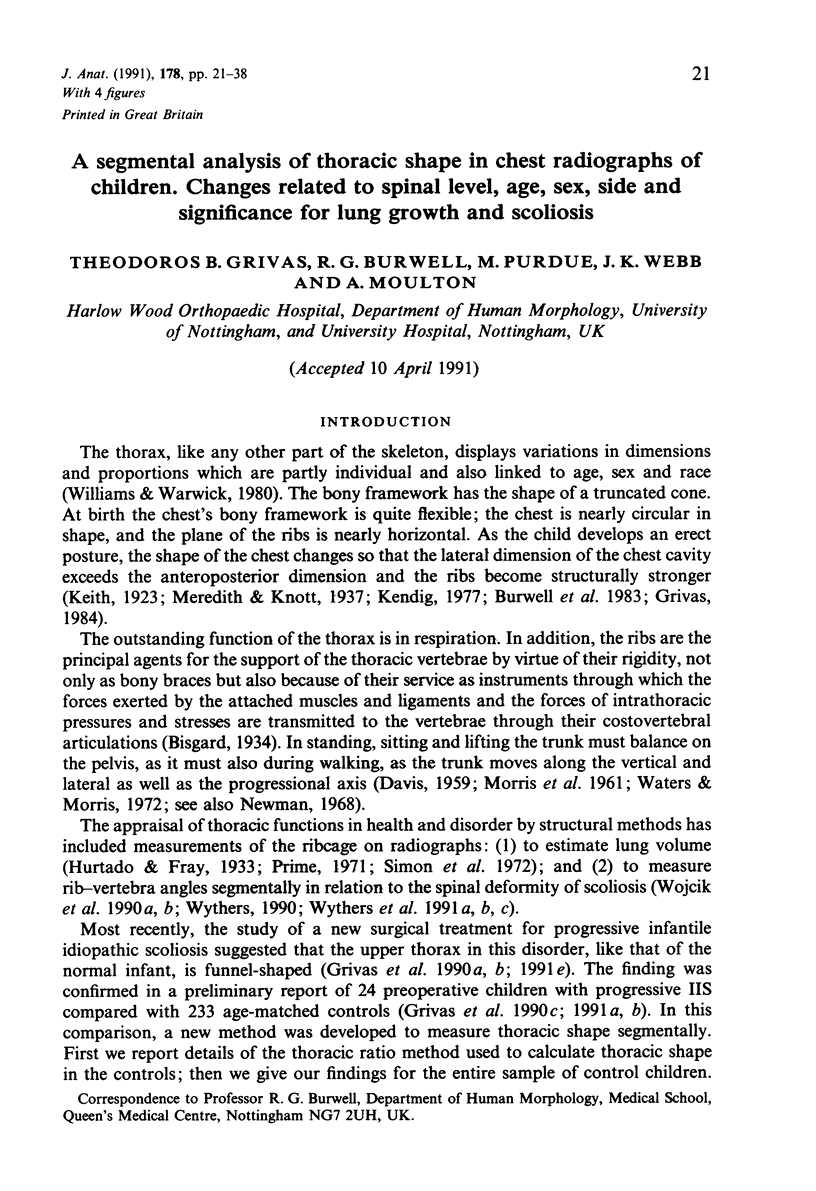
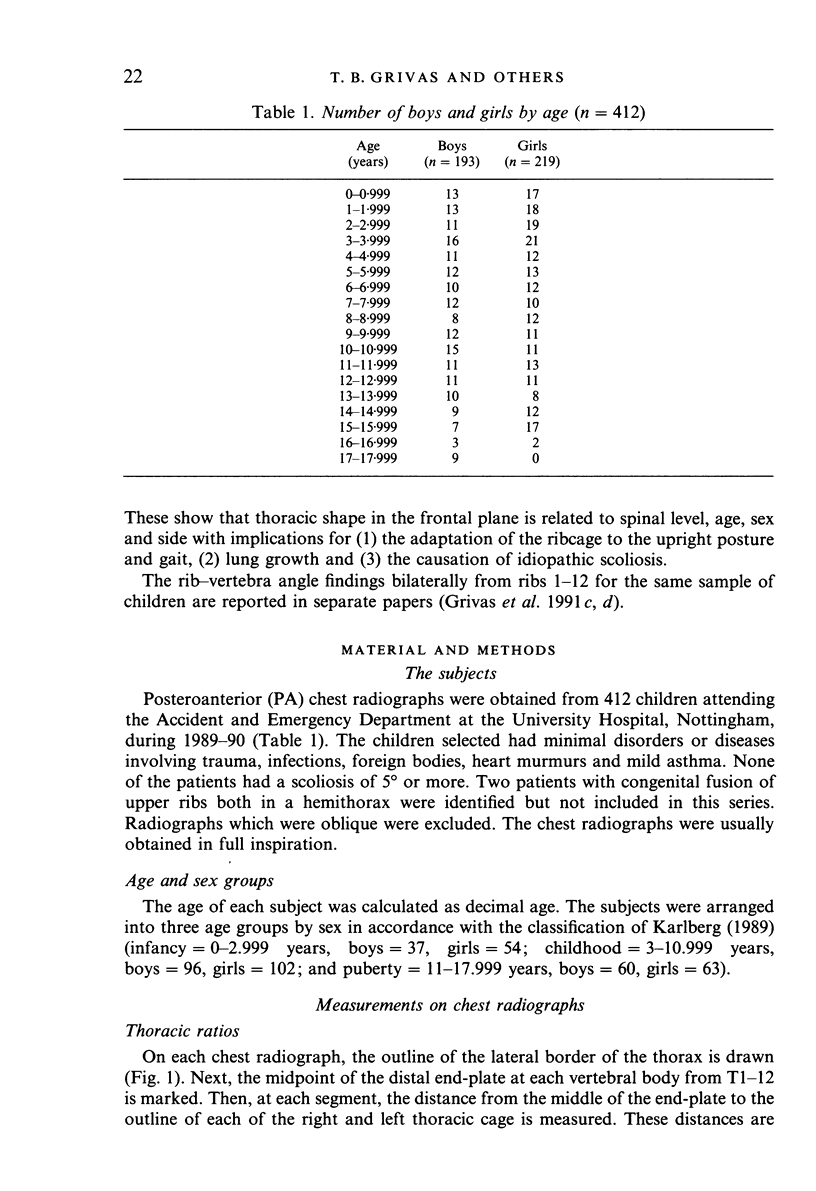
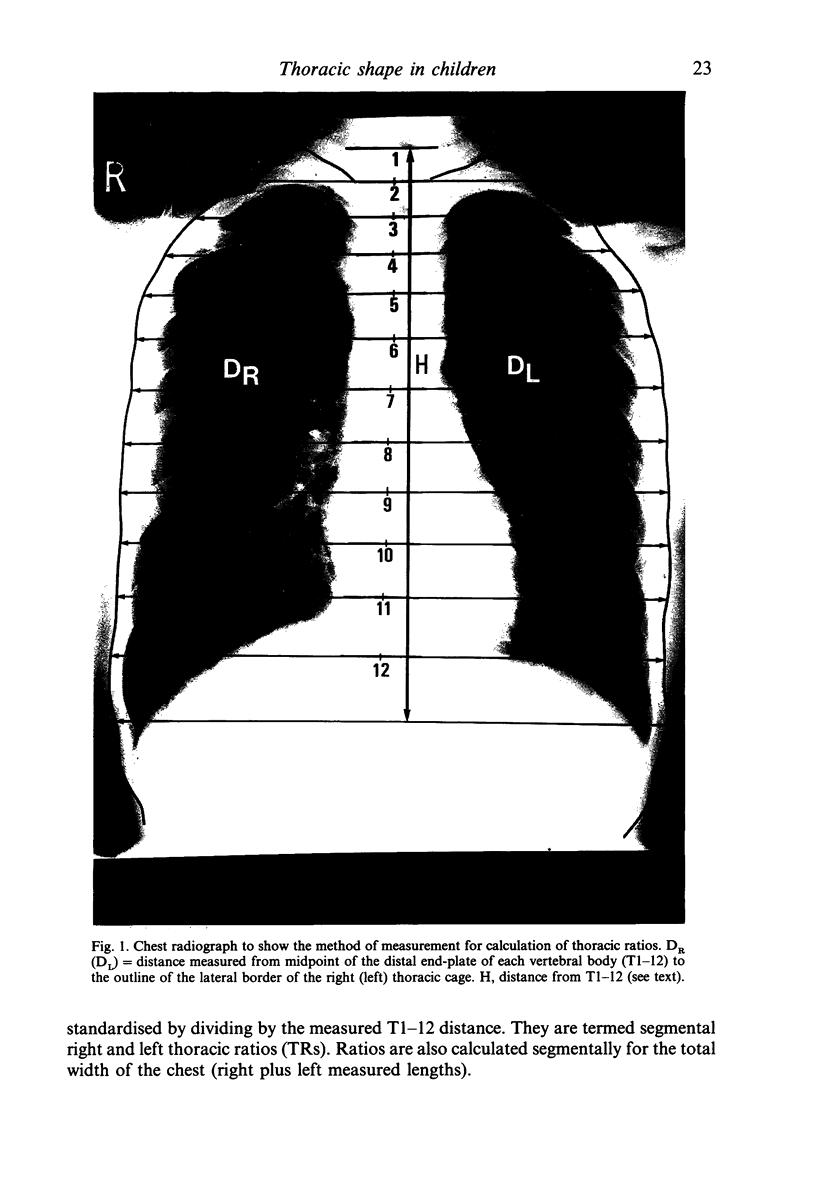
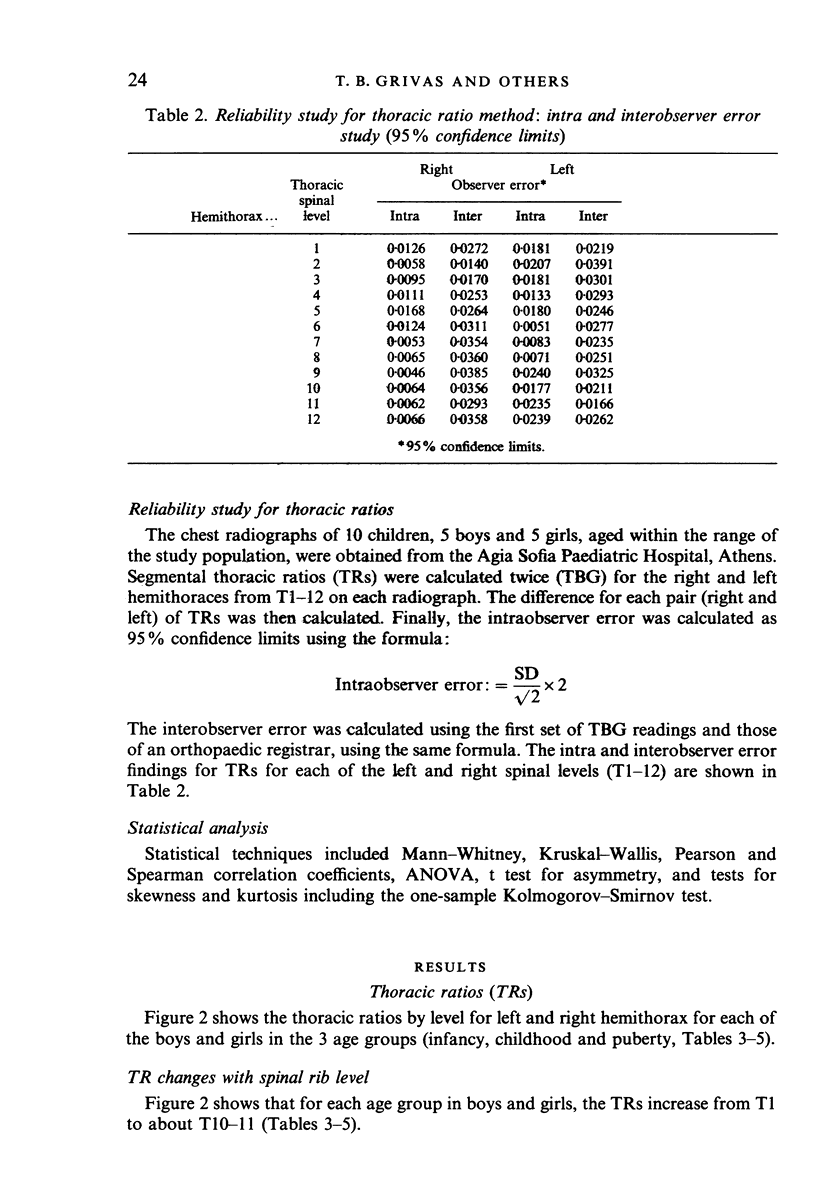
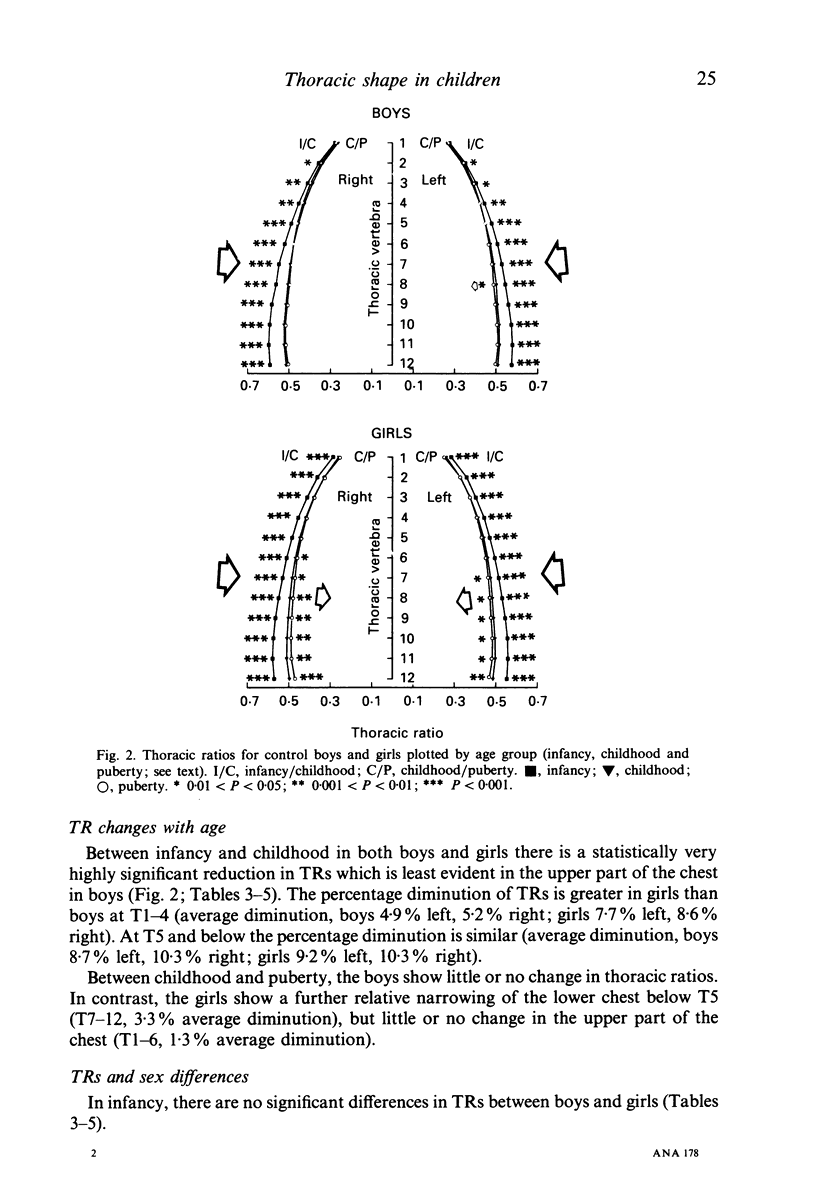
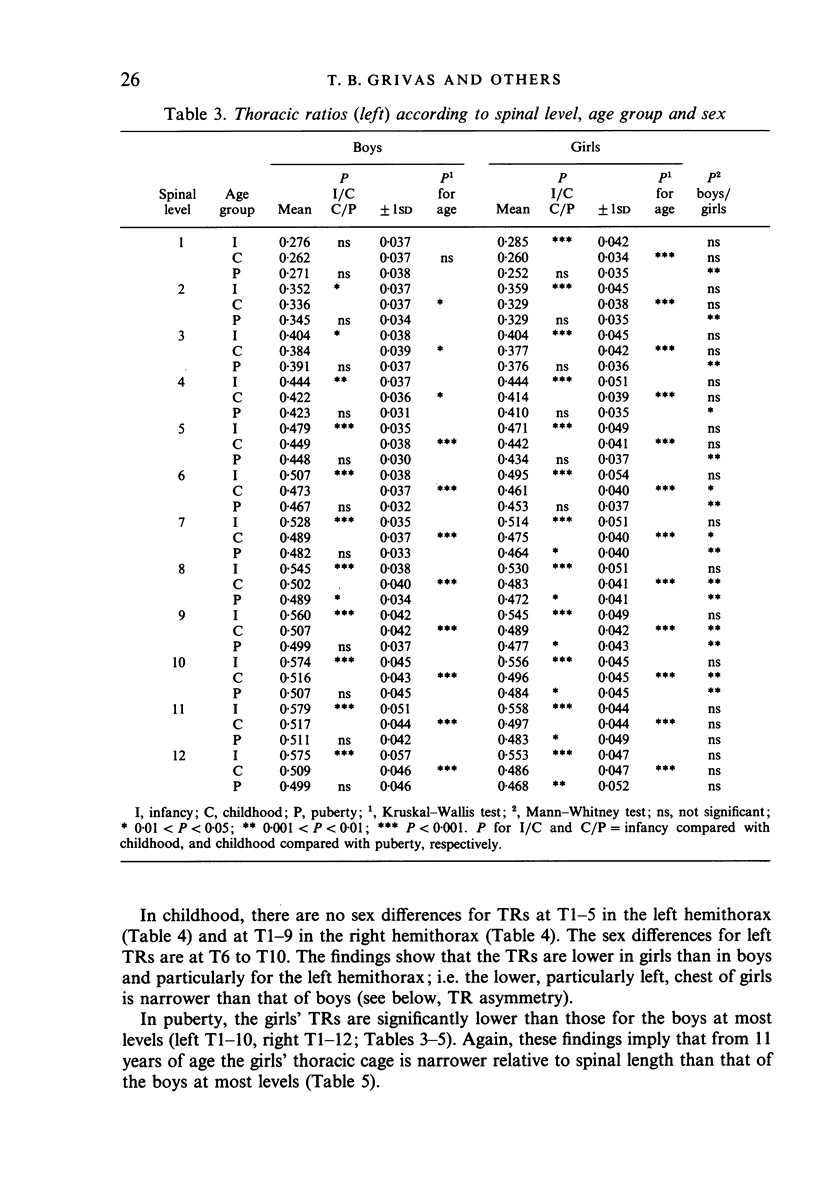

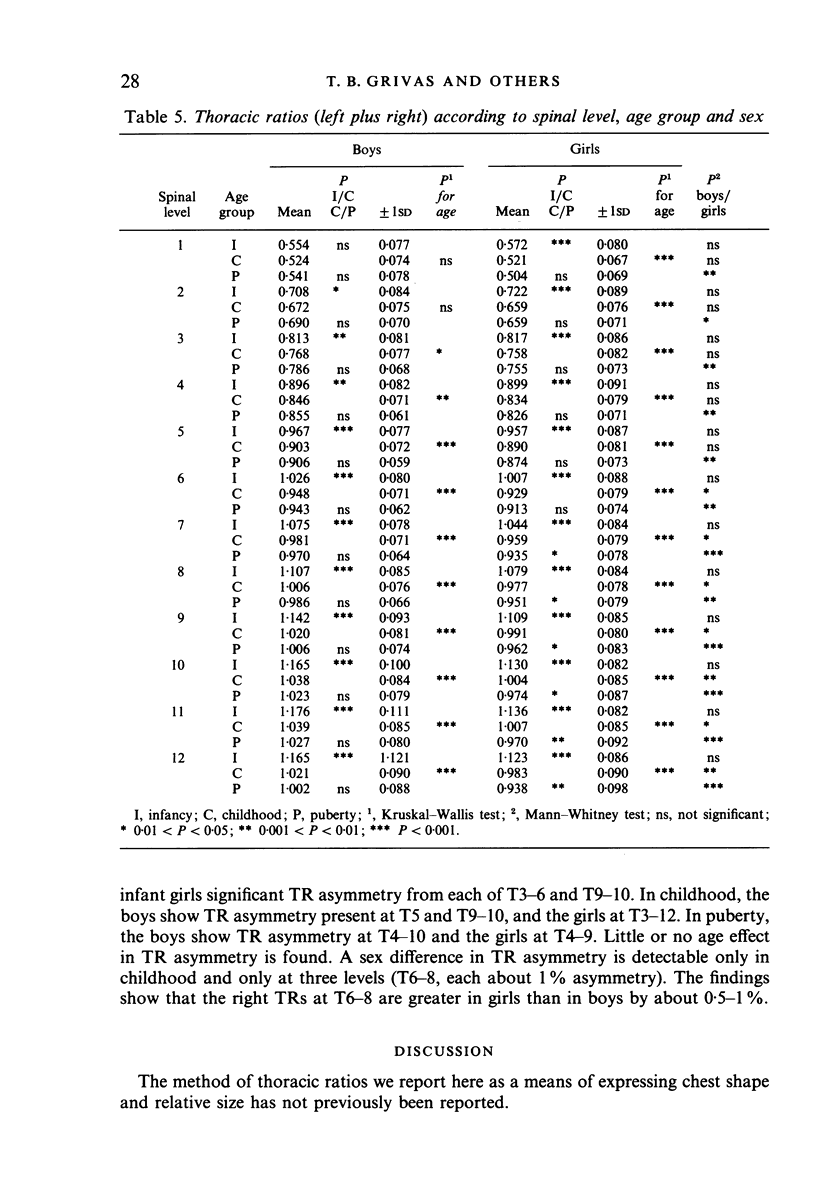
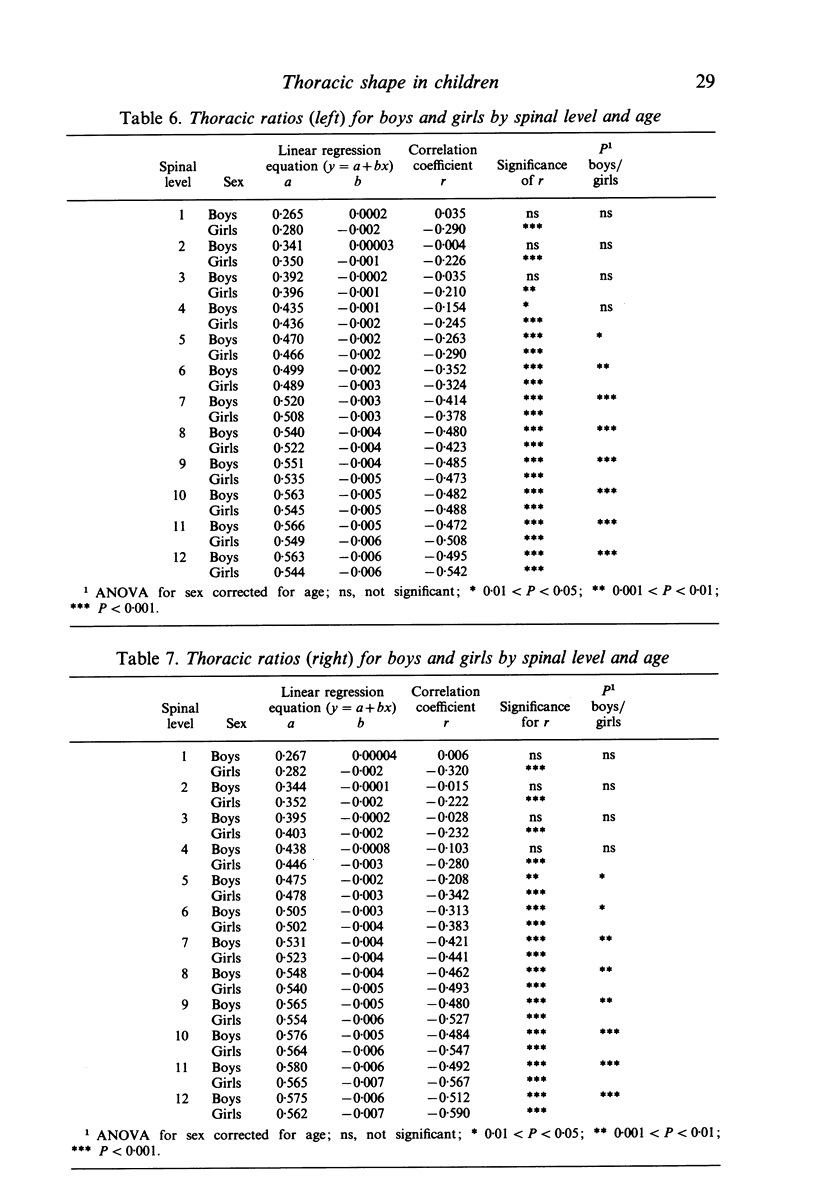
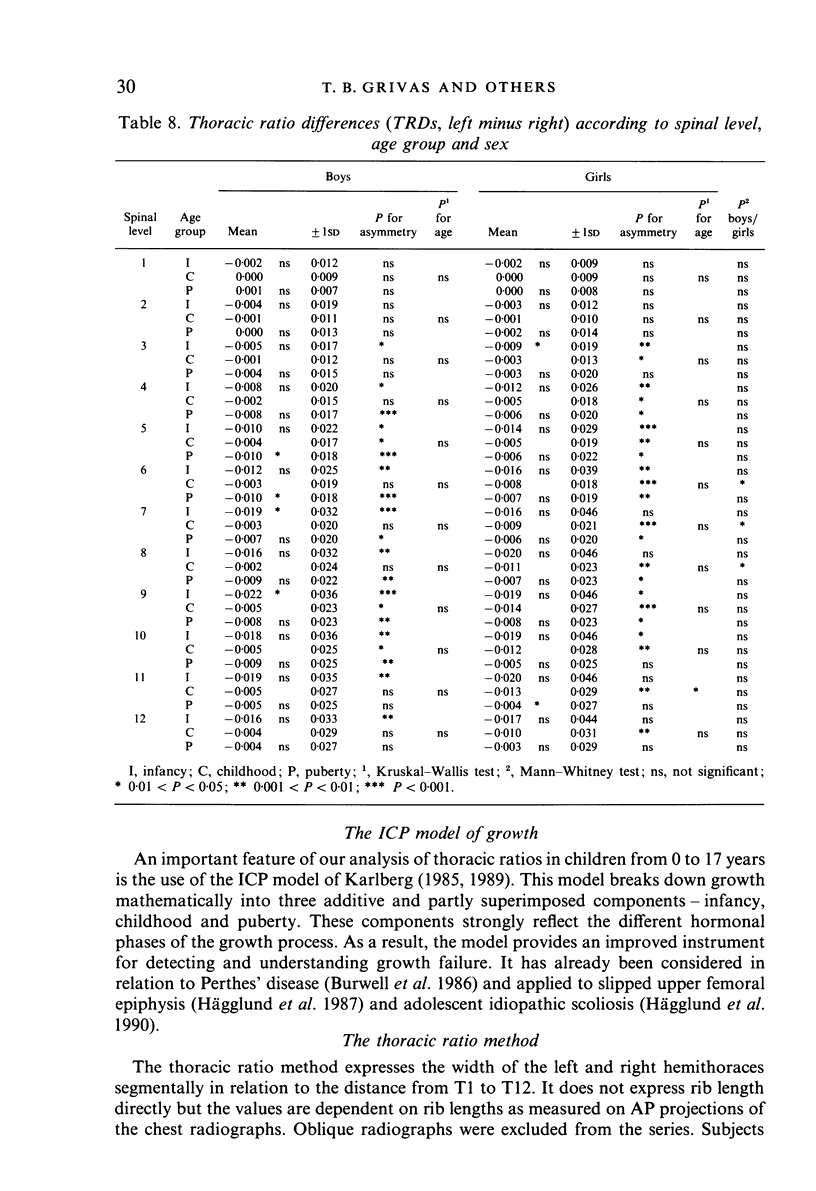

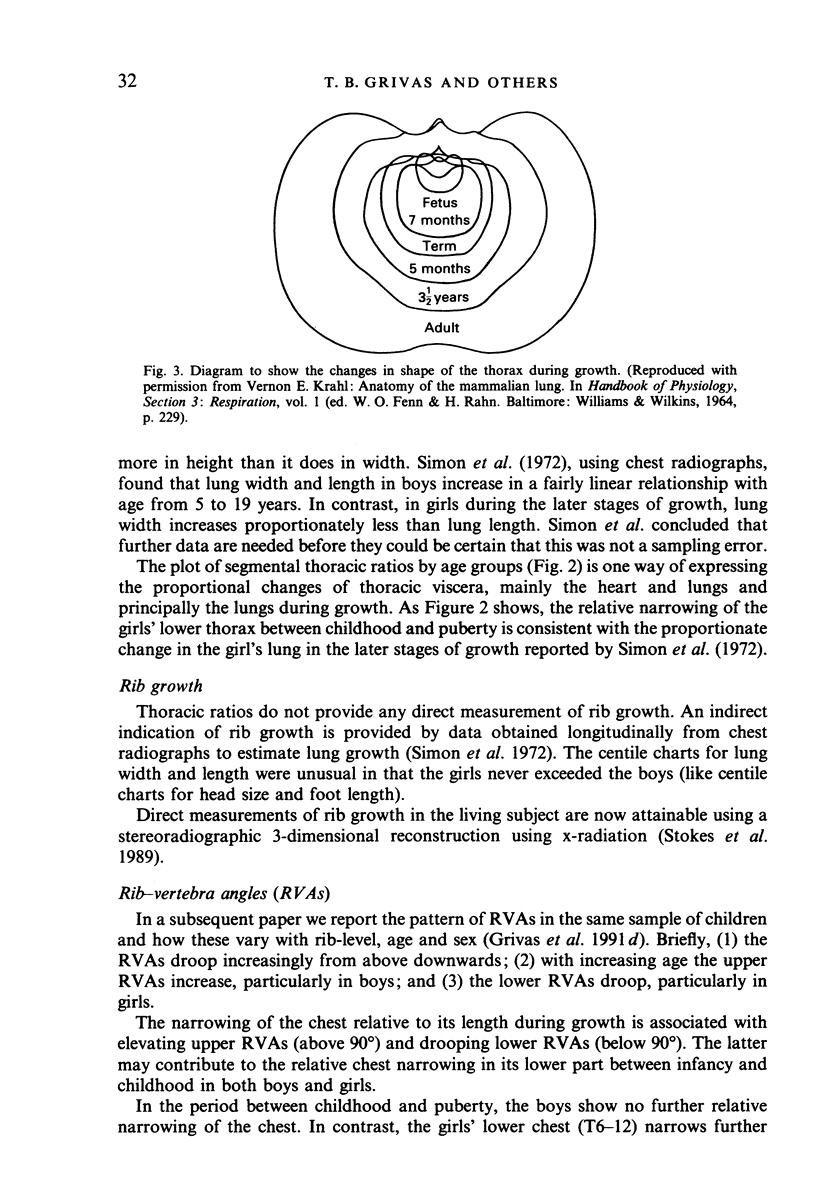

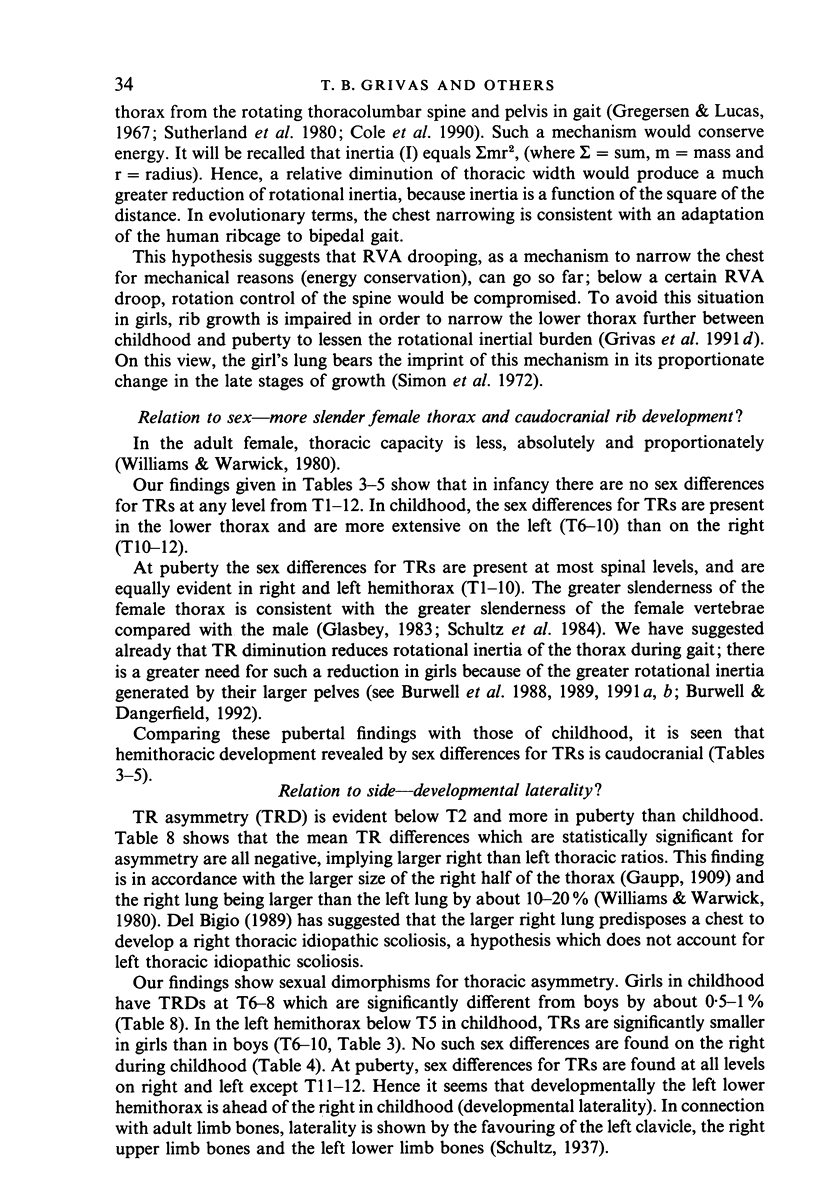
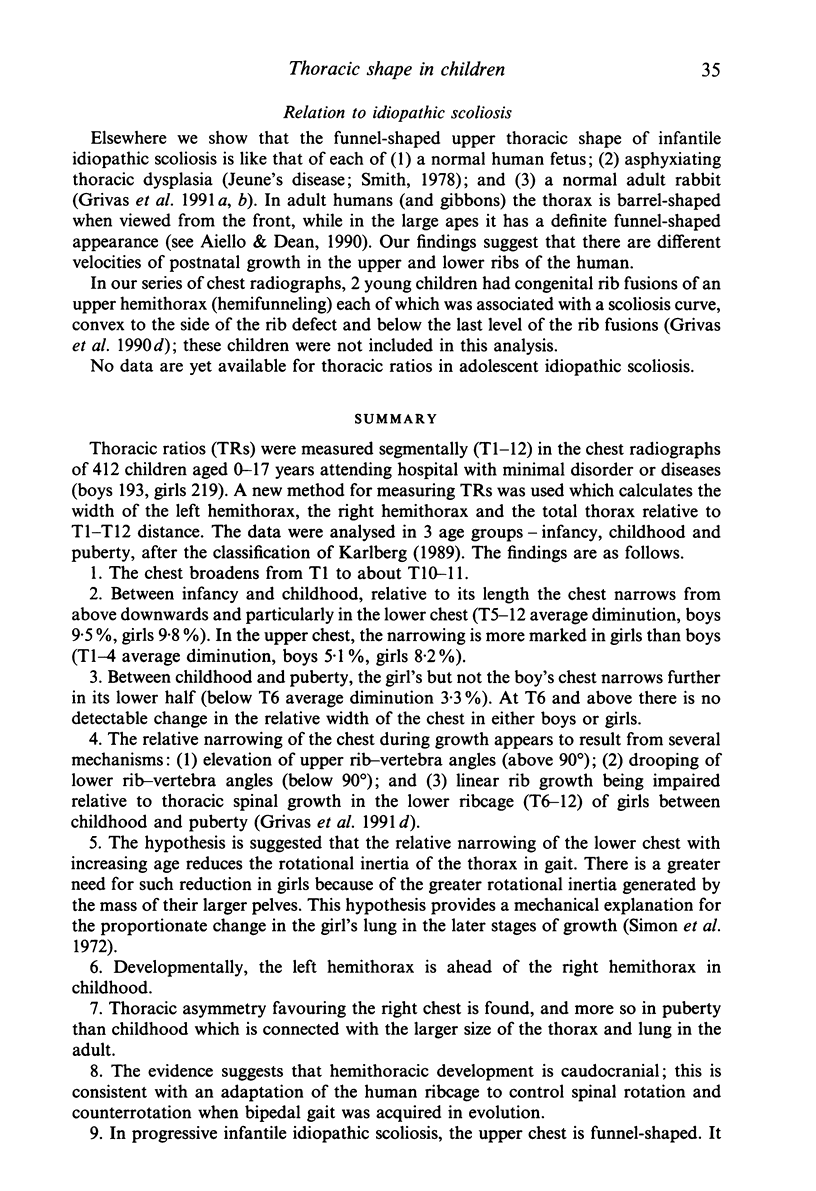
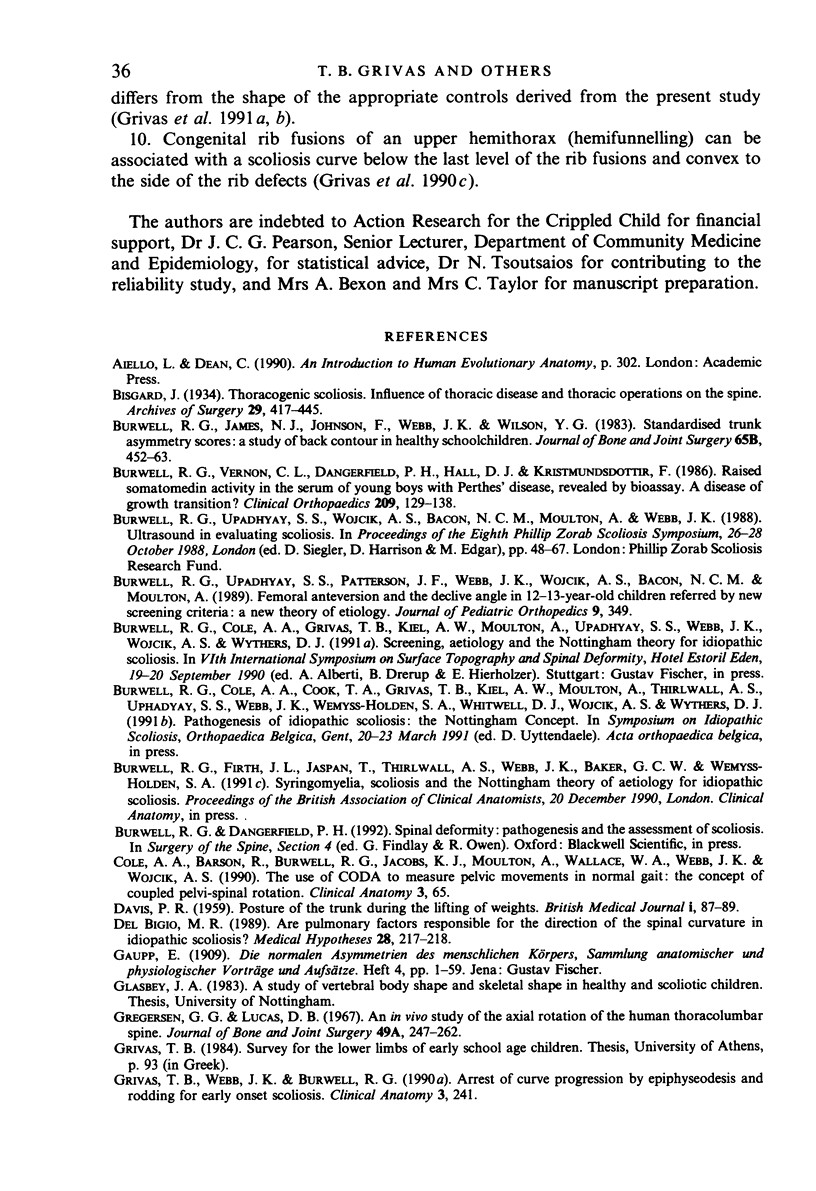
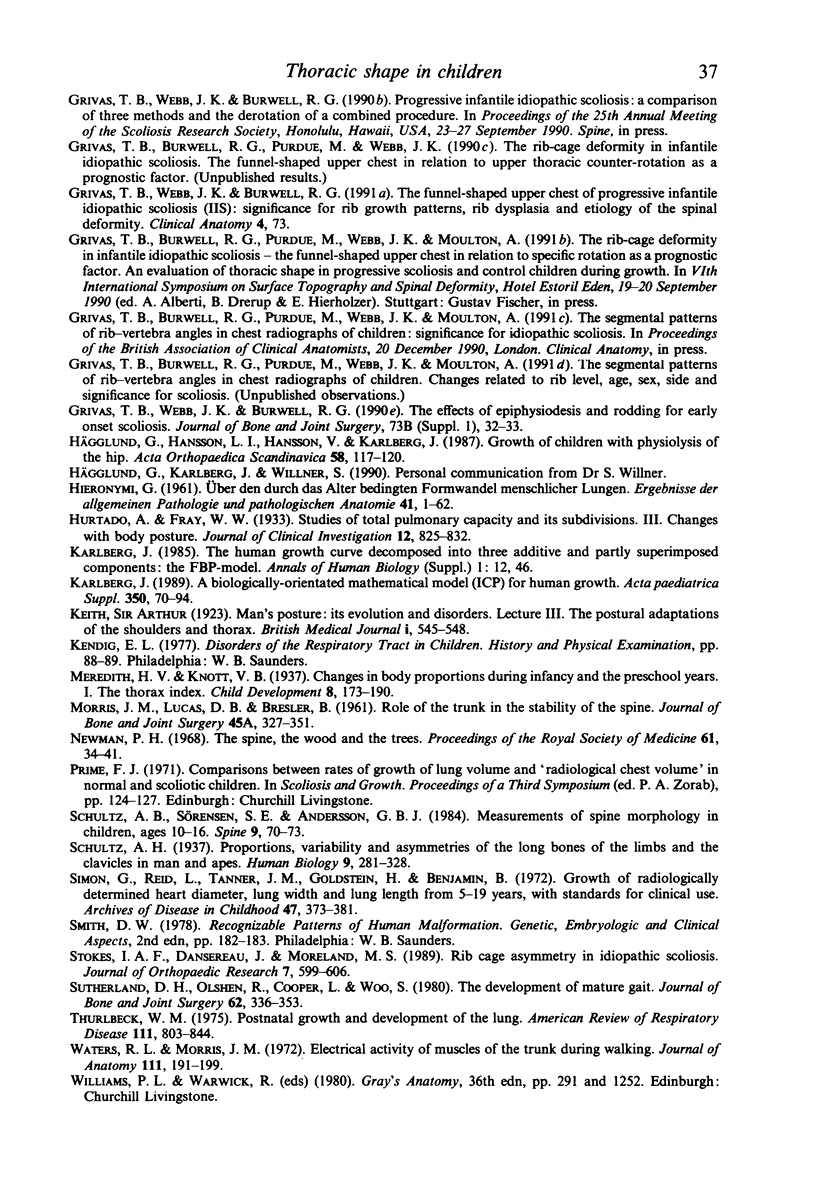
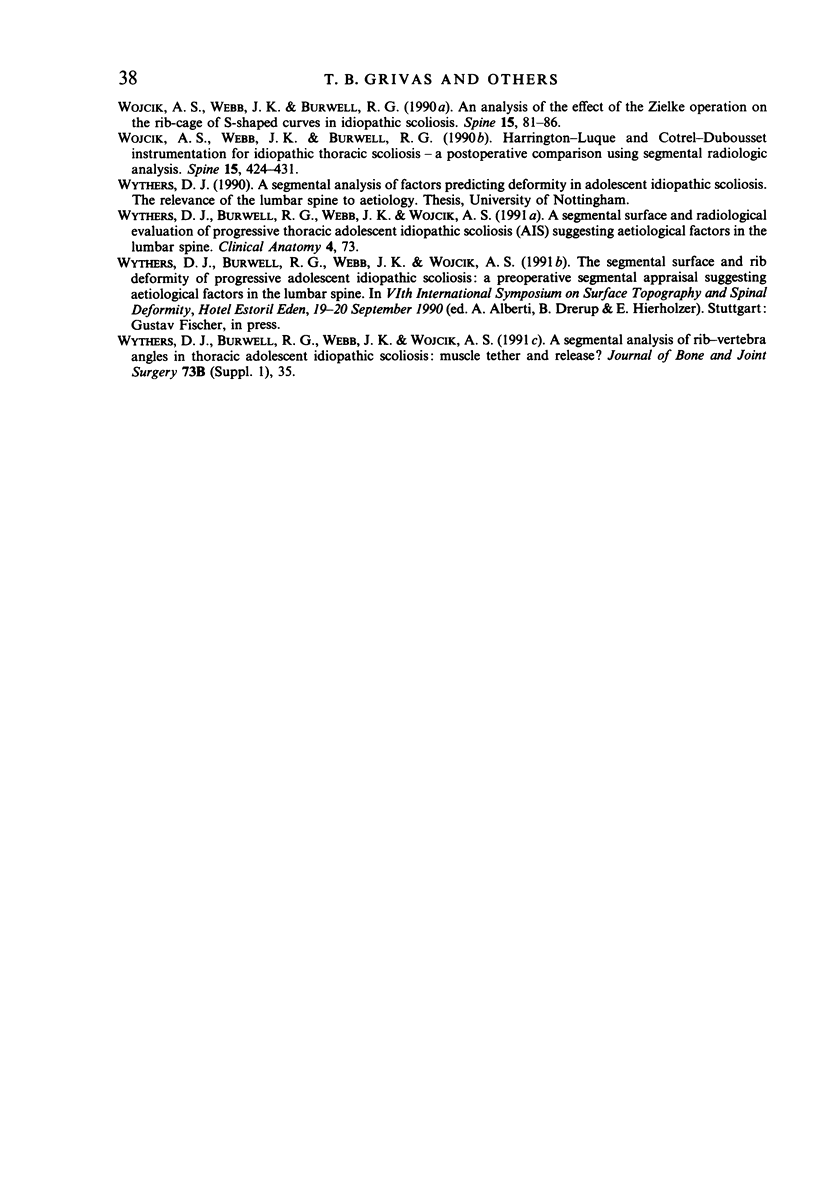
Images in this article
Selected References
These references are in PubMed. This may not be the complete list of references from this article.
- Burwell R. G., James N. J., Johnson F., Webb J. K., Wilson Y. G. Standardised trunk asymmetry scores. A study of back contour in healthy school children. J Bone Joint Surg Br. 1983 Aug;65(4):452–463. doi: 10.1302/0301-620X.65B4.6874719. [DOI] [PubMed] [Google Scholar]
- Burwell R. G., Vernon C. L., Dangerfield P. H., Hall D. J., Kristmundsdottir F. Raised somatomedin activity in the serum of young boys with Perthes' disease revealed by bioassay. A disease of growth transition? Clin Orthop Relat Res. 1986 Aug;(209):129–138. [PubMed] [Google Scholar]
- DAVIS P. R. Posture of the trunk during the lifting of weights. Br Med J. 1959 Jan 10;1(5114):87–89. doi: 10.1136/bmj.1.5114.87. [DOI] [PMC free article] [PubMed] [Google Scholar]
- Del Bigio M. R. Are pulmonary factors responsible for the direction of the spinal curvature in idiopathic scoliosis? Med Hypotheses. 1989 Apr;28(4):217–218. doi: 10.1016/0306-9877(89)90074-1. [DOI] [PubMed] [Google Scholar]
- Gregersen G. G., Lucas D. B. An in vivo study of the axial rotation of the human thoracolumbar spine. J Bone Joint Surg Am. 1967 Mar;49(2):247–262. [PubMed] [Google Scholar]
- Hurtado A., Fray W. W. STUDIES OF TOTAL PULMONARY CAPACITY AND ITS SUB-DIVISIONS. III. CHANGES WITH BODY POSTURE. J Clin Invest. 1933 Sep;12(5):825–832. doi: 10.1172/JCI100542. [DOI] [PMC free article] [PubMed] [Google Scholar]
- Hägglund G., Hansson L. I., Hansson V., Karlberg J. Growth of children with physiolysis of the hip. Acta Orthop Scand. 1987 Apr;58(2):117–120. doi: 10.3109/17453678709146453. [DOI] [PubMed] [Google Scholar]
- Karlberg J. A biologically-oriented mathematical model (ICP) for human growth. Acta Paediatr Scand Suppl. 1989;350:70–94. doi: 10.1111/j.1651-2227.1989.tb11199.x. [DOI] [PubMed] [Google Scholar]
- Schultz A. B., Sörensen S. E., Andersson G. B. Measurement of spine morphology in children, ages 10-16. Spine (Phila Pa 1976) 1984 Jan-Feb;9(1):70–73. doi: 10.1097/00007632-198401000-00015. [DOI] [PubMed] [Google Scholar]
- Simon G., Reid L., Tanner J. M., Goldstein H., Benjamin B. Growth of radiologically determined heart diameter, lung width, and lung length from 5-19 years, with standards for clinical use. Arch Dis Child. 1972 Jun;47(253):373–381. doi: 10.1136/adc.47.253.373. [DOI] [PMC free article] [PubMed] [Google Scholar]
- Stokes I. A., Dansereau J., Moreland M. S. Rib cage asymmetry in idiopathic scoliosis. J Orthop Res. 1989;7(4):599–606. doi: 10.1002/jor.1100070419. [DOI] [PubMed] [Google Scholar]
- Sutherland D. H., Olshen R., Cooper L., Woo S. L. The development of mature gait. J Bone Joint Surg Am. 1980 Apr;62(3):336–353. [PubMed] [Google Scholar]
- Thurlbeck W. M. Postnatal growth and development of the lung. Am Rev Respir Dis. 1975 Jun;111(6):803–844. doi: 10.1164/arrd.1975.111.6.803. [DOI] [PubMed] [Google Scholar]
- Waters R. L., Morris J. M. Electrical activity of muscles of the trunk during walking. J Anat. 1972 Feb;111(Pt 2):191–199. [PMC free article] [PubMed] [Google Scholar]
- Wojcik A. S., Webb J. K., Burwell R. G. An analysis of the effect of the Zielke operation on the rib cage of S-shaped curves in idiopathic scoliosis. Spine (Phila Pa 1976) 1990 Feb;15(2):81–86. doi: 10.1097/00007632-199002000-00006. [DOI] [PubMed] [Google Scholar]
- Wojcik A. S., Webb J. K., Burwell R. G. Harrington-Luque and Cotrel-Dubousset instrumentation for idiopathic thoracic scoliosis. A postoperative comparison using segmental radiologic analysis. Spine (Phila Pa 1976) 1990 May;15(5):424–431. doi: 10.1097/00007632-199005000-00015. [DOI] [PubMed] [Google Scholar]



